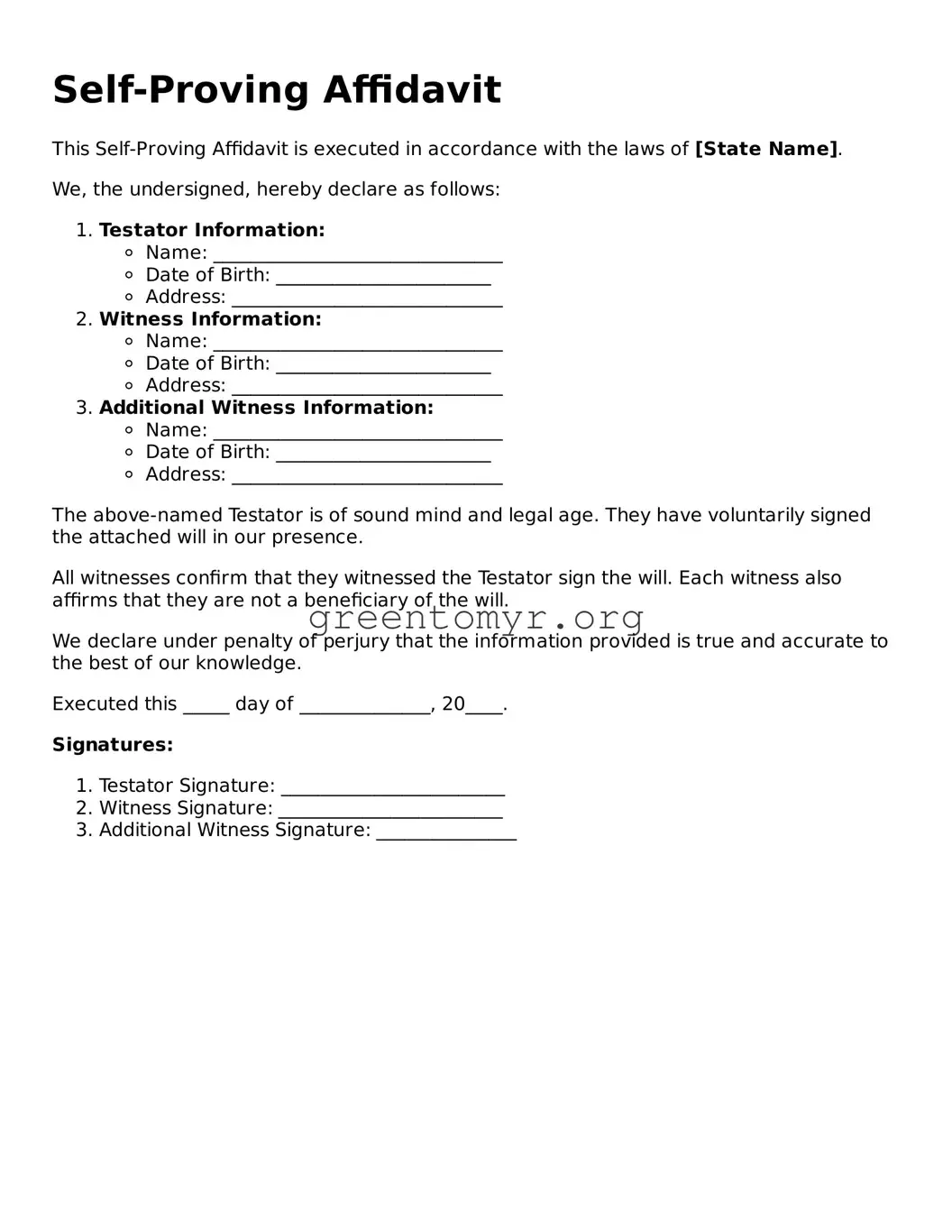What is a Self-Proving Affidavit?
A Self-Proving Affidavit is a legal document used in the context of wills. It allows a will to be validated without requiring the testimony of the witnesses in court. This affidavit typically includes statements from the testator (the person who made the will) and the witnesses affirming their identities and the testator's intentions at the time of signing the will.
Why should I use a Self-Proving Affidavit?
Using a Self-Proving Affidavit can simplify the probate process. It helps eliminate the need for witnesses to appear in court, which can be beneficial if those witnesses are unavailable or if their testimony might be challenged. This can lead to a faster and more efficient probate process.
Who can be a witness for the Self-Proving Affidavit?
Generally, anyone who is at least 18 years old and of sound mind can serve as a witness. However, it's preferable for witnesses to be impartial individuals, such as friends or relatives who do not stand to inherit from the will. This helps reduce any potential conflicts of interest.
How is a Self-Proving Affidavit executed?
The execution process involves the following steps:
-
The testator signs the will in the presence of witnesses.
-
The witnesses then sign the Self-Proving Affidavit, confirming their presence during the signing of the will.
-
The testator and the witnesses may also need to take an oath before a notary public.
This collective process ensures the validity of the will and the affidavit.
Where should I store my Self-Proving Affidavit?
It's essential to keep the Self-Proving Affidavit, along with the will, in a safe place. Consider options like a safety deposit box, a fireproof safe, or with your attorney. Make sure your loved ones know where to find these documents when necessary.
Is a Self-Proving Affidavit legally required?
No, a Self-Proving Affidavit is not legally required for a will to be valid. However, using one can streamline the probate process and reduce future complications. In many cases, it is highly recommended for the reasons mentioned above.
Can I revoke a Self-Proving Affidavit?
How does the Self-Proving Affidavit impact the probate process?
When a Self-Proving Affidavit is included with the will during the probate process, it typically allows the court to accept the will without further evidence or testimony. This can lead to a quicker resolution and less court involvement, benefiting the beneficiaries.
Can I create my own Self-Proving Affidavit?
While it is possible to draft your own Self-Proving Affidavit, it is advisable to consult with a legal professional to ensure that it meets all necessary legal standards in your state. Each state may have different requirements for what must be included in the affidavit.
What if my witnesses are not available when I die?
If your witnesses are not available, the Self-Proving Affidavit can still provide some security for your will's validity, assuming it was properly executed. The court may accept alternative forms of evidence to establish the will's legitimacy, but this could complicate the process and potentially lead to delays.
